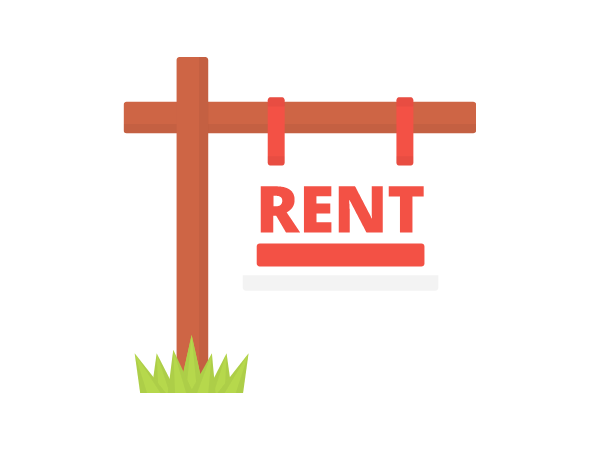Rent relief – everything to know
Tenants who are going through financial hardships may apply for rent relief. The US government knows many Americans have been through a lot because of the COVID-19 pandemic. The Department of Housing launched the Emergency Rental Assistance Program (ERAP) to help renters who cannot pay rent by covering several monthly payments.
This is just one of the many federal programs helping folks during the coronavirus crisis. If you’re one of them, you should know how this rent relief program works and the steps for application processing. Fortunately, this guide will show all you need to know about ERAP, so you can start applying as soon as possible.
I’ll explain the program costs and how you’ll receive the ERAP funds. Then, we’ll discuss the criteria you’ll meet to qualify. I’ll also talk about how the program would work for specific situations. That way, readers with similar issues will know how to get rent relief.
How does federal rental assistance work?

This federal assistance allows local programs to pay for home energy, rent, and utility bills. It covers costs for water, electricity, gas, fuel oil, sewer, trash removal, and these:
- Reasonable late fees that are not part of your utility or rental debts
- Expenses for families who have to move
- Rental-related fees for families who must move, such as application fees
- Home internet service
Many of the benefits will depend on your local program. For example, some of them may provide case management, housing counseling, and other housing stability services.
Still, they received the same permission from the rent relief program to cover up to 18 months of rent dating back to March 13, 2020. The local program should have the funds, though.
If you have overdue rent, the money will first cover that. You may ask your local program for help with upcoming rent for three months. Again, this depends on the program.
This means you don’t have to be behind on payments to request help. Rent relief also assists households living in motel or hotel rooms.
It could also pay for last year’s rent, but it should have been charged on or before March 13, 2020. Of course, you have to check if you qualify for the program first.
Do I qualify for rent relief?
Landlords and tenants may apply for this program. The former can apply on behalf of renters, and they will still be part of the renter applications.
Tenants must prove that their income qualifies and that they’re going through housing instability. Specifically, you must prove the following to be true:
- At least one member of the household qualified for unemployment and lost income. Also, that person should prove they had other money problems such as owing a large sum.
- Your household income is below the amount specified in your area. This is often 80% of the Area Median Income (AMI) adjusted for family size.
- At least one household member may become homeless or struggle to find a stable place to live.
Your local program will determine the documents you need to prove your lack of income. As for housing instability, you must sign a written statement. You may have to show these too:
- An eviction notice, utility bill, or rent bill that is past due
- Proof that you live in unhealthy living conditions
- Other requirements from your local program
You must also prove that you live in a certain place and agree to pay a specific amount for rent. You will need an agreement signed by you and your landlord.
If you can’t produce that document, your local program may accept a written statement about your rent and proof of your address. The following papers may serve as evidence:
- Proof that you paid utilities for your place
- A statement from your landlord
- Bank statements
- Check stubs
- Other paperwork requested
Check your local program’s website for more info. They usually allow online applications, and their sites will provide more info about how to get rent relief.
More rent relief tips
Some people have different living conditions that may not fit the listed requirements. Fortunately, the rent relief program has guidelines for such situations:
- You were living somewhere else – If you qualify, it doesn’t matter how long you’ve been living elsewhere. Rent relief is always open for those who cannot afford housing costs because of COVID.
- Your income changed because of a federal rent subsidy – You still qualify for relief with the utilities or rent you must pay.
- You live in a mobile home – You may get rental help for the lot where your home is.
- You’re a member of a tribe in a non-tribal land or vice-versa – You could get rent relief from your tribe or the local or state government.
- You’re under a “rent-to-own” agreement with your landlord – You could still get rental help as long as you haven’t used an option to buy the property. What’s more, you should not have signed or cosigned a home loan for it yet.
- You live in a houseboat – The rent relief could cover your mooring fees.
What if you need more help after receiving rent relief? If you have a family, you may receive child tax credits for each kid. Otherwise, then check your mailbox or bank account.
If it isn’t there, then reach out to the IRS to get updates about it. Also, did you have a new child in 2021? Then, it may not have received a stimulus check for them.
This could mean the IRS didn’t compute for you, new kid. In turn, it may give you a fourth stimulus check worth $1,400 for each baby you got in 2021.
You should also check your local government for other relief options. It won’t hurt to ask around, and you might find more rental help.
Final thoughts
If you have more questions about the rent relief program, please reach out to the US Department of Treasury website. The local programs can help you too.
Many of them have call centers that can answer your concerns about rent relief. Also, their websites have more information about applications.
Check all the other relief options available. Perhaps your local area has other programs that could help you. Again, it doesn’t hurt to try and look for them.
Once you get the funds, make sure to make the most out of them. If you can, try to save for an emergency fund, so you’ll be ready in case a sudden expense comes up.
Sponsored Advertising Content:
Advertorial or Sponsorship User published Content does not represent the views of the Company or any individual associated with the Company, and we do not control this Content. In no event shall you represent or suggest, directly or indirectly, the Company's endorsement of user published Content.
The company does not vouch for the accuracy or credibility of any user published Content on our Website and does not take any responsibility or assume any liability for any actions you may take as a result of reading user published Content on our Website.
Through your use of the Website and Services, you may be exposed to Content that you may find offensive, objectionable, harmful, inaccurate, or deceptive.
By using our Website, you assume all associated risks.This Website contains hyperlinks to other websites controlled by third parties. These links are provided solely as a convenience to you and do not imply endorsement by the Company of, or any affiliation with, or endorsement by, the owner of the linked website.
Company is not responsible for the contents or use of any linked website, or any consequence of making the link.
This content is provided by New Start Advantage LLC through a licensed media partnership with Inquirer.net. Inquirer.net does not endorse or verify partner content. All information is for educational purposes only and does not constitute financial advice. Offers and terms may change without notice.



